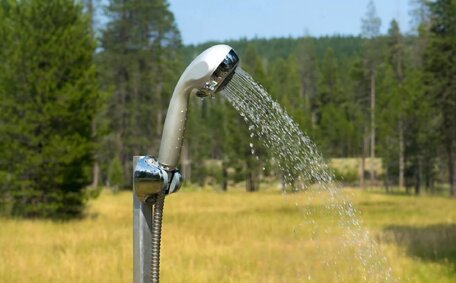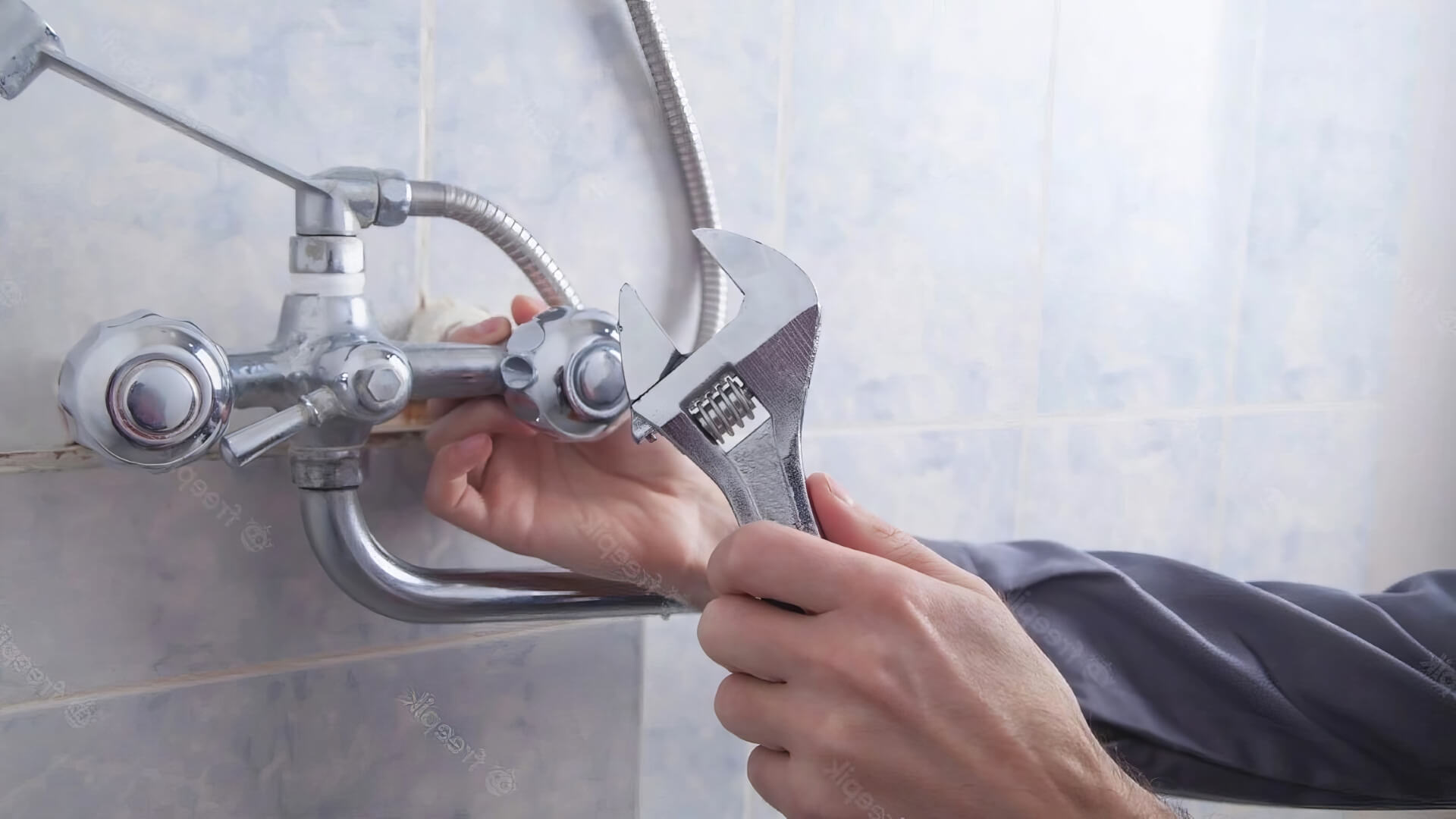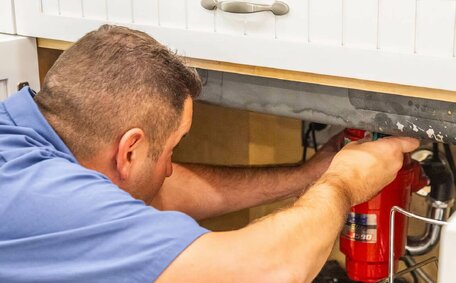Identifying Common Household Water Leak Locations
Typical household water leak locations include:
- Under sinks - Check around your home’s kitchen and bathroom sinks for signs of water damage or dampness, which may suggest a slow leak.
- Around toilets - The wax ring seal at the back toilet base and floor juncture is susceptible to leaks. Check the base of toilets for moisture or odours.
- Water heaters - Corrosion, loose fittings or cracks in the water storage tank can lead to leaks. Inspect tanks and connections regularly.
- Appliances - Dishwashers, washing machines and elements of your hot water system like refrigerators with ice makers may spring leaks over time. Regularly inspect hoses and supply lines for any water leakage that might go unnoticed.
- Pipes in walls/floors - Cracks or joint failures in the pipes that conceal leaks in your household water often go unnoticed. Stay vigilant for any spikes in your water bill as these could indicate a concealed leak.
Also, give attention to inspecting your clogged gutters and downspouts, as well as the foundation, to identify any early signs of leaks. Make sure to close your taps firmly to reduce water waste and mitigate the extensive damage that leaks can inflict on your structure.
Kitchen and Laundry Appliance Leaks
Dishwashers, fridges, washing machines and sink taps are typical appliances that could develop leaks. Signs to watch out for include:
- Standing water or dampness under or around the appliance
- Dripping water or sounds of running water coming from the appliance
- An appliance not drying dishes or clothes properly
- Increased humidity or musty smells around the appliance
Conduct routine checks of appliance cycles and take immediate action if you detect any leakage. You can contact our specialists who will monitor connections, supply lines, and drainage pipes closely for any leak your utility might have.
Please note, recognising how to address a minor leak is crucial, as even these can waste thousands of litres water per year, so make sure no drop goes unnoticed. Tightening fittings, replacing worn parts in your hot water system, or resealing pipes can prevent water around your fixtures; proactive steps to ensure damage can be avoided. A big leak often occurs due to loose fittings, cracked hoses, or faulty installations, sometimes even becoming apparent near water meters.
Toilet and Plumbing Fixture Leaks
Toilets, taps, showers and other plumbing fixtures can develop leaks over time. Watch for these signs of leaks:
- Condensation or water pooling around the base of toilets
- Toilet tanks that run continuously or turn on/off frequently
- Dripping faucets or shower heads
- Higher than normal water bills
Conduct the 'paper test’ by placing toilet paper under the rim overnight and observing for dampness, a sign of a leak. If colour appears in the bowl within 30 minutes without flushing, there’s a leak.
Alternatively, add a few drops of food colouring to the tank to trace the leak coming into the bowl.
Leak-inducing factors like degraded flapper valves, slack connections, fractured tanks/bowls, and ineffective wax ring seals must be addressed promptly. A minor faucet drip inside can result in a water leak your home cannot overlook, wasting more than 50 litres of water per day. Get all fixture leaks fixed promptly to avoid extensive water loss and structural damage in your property.
Assessing Leak Severity and Preventing Damage
When you discover a leak, evaluating its severity is crucial to minimise water damage your home and consider if you can apply for a leak allowance on your water bill. Here are some preventative measures because leaks can cause extensive damage:
- In the event of a burst pipe with active spurting, immediately close the main stop tap to stop water flow and curb flooding. The main stop tap, typically located near your water meter, is used to shut off the water supply.
- For minor leaks, a bit of creativity may be needed to temporarily manage the water using any towels, buckets, or other receptacles your taps might spill and stave off interrupted water supply while arranging repairs.
- Check if any electrical components near electrical appliances or wiring have become wet and switch off electricity to affected circuits for safety.
- Remove or elevate any furniture, rugs, artwork from leak sites to prevent water seep into your cherished belongings.
- Once the area is secured, you’ll need to take photos/videos documenting the leak’s location and extent of water damage for insurance purposes.
- Contact A licenced emergency
Early leak detection and preventative measures such as yearly plumbing inspections can notably diminish leak occurrences and prevent severe pipe bursts or water saturation leading to dangerous mould and structural weaknesses.
Shutting Off the Water in an Emergency
In the event of a significant leak or burst pipe, swiftly shutting off the water to avoid flooding and minimise property damage is imperative. Here are the steps:
- Locate the main stop valve near the water metre on the inlet pipe. It likely features a control valve such as a gate valve or ball valve. The stop valve, which controls your water supply, may be underground in a box - use a valve key to operate it.
- Should the main stop valve be inaccessible, deactivate water at the isolating valves linked to appliances such as washing machines and dishwashers. This will partially shut down water.
- Once all water sources are off, including the water meter’s stop valve, disconnect power to the affected area to prevent mould if leakage is near any electricals. Ruptured pipes and live wires pose an electrocution risk.
- Contact a licenced, 24 hour plumber immediately so they can inspect the leak severity, isolate broken pipes and start drying out water-logged areas to prevent mould formation.
- Take photos and videos of all damage for insurance claims. Make temporary repairs if safe to contain water. Your plumber will advise on next steps such as pipe repairs.
Acting swiftly is vital in water leak emergencies to halt water wastage, prevent structural weaknesses forming from water saturation and avoid electrical fires - so make sure everyone in the household knows the exact location of the main stop valve.
DIY Temporary Leak Repairs
For minor leaks, you may need to shut off the water supply and can also implement short term fixes in anticipation of contacting plumbing services, however these should only be used temporarily and professional repair is still required:
- Replace old washers with new ones to stop leaking taps and prevent slow drips. Tighten faucet handles or nuts to stop leaks around joints. Apply plumber’s tape to threaded joints near the toilet to seal minor leaks.
- Leaking pipes or fittings - Use clamps or epoxy sticks to secure joints and stop small drips. Place a small container under leaks to contain water until fixed.
- Pinhole leaks in copper pipes - File down any burrs around the hole and apply plumbing epoxy to seal minute holes and prevent larger cracks from forming.
- Leaking toilet cistern - Adjust or tighten flush valve if loose, which can reduce the risk of leaks developing. Use food colouring to identify where leak spots might be occurring. Use dye tablets in the toilet cistern to identify leak origins by colouring escaped water.
While DIY fixes seem convenient, most household plumbing requires professional tools and materials to properly repair leaks. Unresolved minor leaks can escalate into significant, more expensive issues as pipes or connections decline.
Permanent solutions prevent repeated band-aid fixes and avoid issues that could damage your plumbing system further; consult our licenced technicians who can inspect, troubleshoot and rectify the issues.
Hiring a Professional Plumber for Permanent Repairs
For issues such as leaks or burst pipes, it is advisable to engage a licenced plumber for durable repairs. Compared to DIY fixes, professionals have the expertise to accurately diagnose problems, access hard-to-reach areas, use quality materials and guarantee industry-standard workmanship.
As an established plumbing company operating in Penrith and wider Sydney for over 10 years, Penrith Plumbing has extensive experience tackling all types of leaks and plumbing problems in local homes. Our fully qualified and background checked technicians can provide thorough repairs including:
- Fixing leaking pipes in walls and floors using advanced detection equipment
- Finding and repairing the source of leaks rather than just visible damage
- Replacing flapper valves, fill valves and fittings in leaking toilet cisterns
- Installing of pressure limiting valves to prevent leaks from high water pressure
- Repiping entire water pipes systems, ensuring use of quality copper, PEX, or stainless steel materials
We also specialise in water leak detection services, ensuring no leaks go unnoticed with smart water metering and advanced plumbing camera inspections. This helps identify faults in inaccessible pipework behind walls that could cause a water leak home scenario, so we can help you find out more about appropriate repairs.
Don’t live with constant leaks or patch up recurring problems yourself. Prevent severe building damage - let the specialists handle your next plumbing repair job.
For superior repairs by licensed tradespeople, call Penrith Plumbing on 1300 349 338 or contact us to book an inspection.
Preventing Future Leaks
There are several preventive measures homeowners can implement to significantly reduce the likelihood of leaks occurring inside and outside the home:
- Perform routine visual checks around your home for wear, corrosion, dampness or small drips on all water-utilising appliances and visible plumbing, as they are prone to leaks.
- Inspect exterior walls, the roof, foundations, gutters, and garden after rain for signs of seepage or puddling, indicating possible pipe damage or drainage complications that may affect body corporate obligations.
- Have a licensed plumber perform an annual maintenance check water leaks on all plumbing systems, which can minimise water usage while adhering to building format regulations. This allows inspection of pipes run behind walls for preemptive repairs, as corrosion or small cracks can cause serious issues if left unchecked.
- Use water-efficient taps, showerheads, and toilet cisterns to lower water flow and pipe strain, in line with building format plan requirements. Lower pressure decreases pipe stress and leak risks.
- Upgrade ageing pipework made from corrosion-prone materials like galvanised iron to rigid copper piping less susceptible to splits and pinhole failures over time.
- Think about fitting whole-home leak detection systems to main water pipes. Automated sensor valves linked to your water meter can shut off water supply when leaks are detected, preventing extensive damage.
Proactive plumbing maintenance can save considerable costs in future leak damage repairs. Minor issues addressed promptly can prevent problems which may escalate into very serious ones, thereby conserving precious water resources. To discuss suitable leak prevention options for your home, please call us 1300 349 338.






